Clem Mayer builds a real working communicator inspired by classic sci-fi, a handheld badge that actually makes phone calls. Powered by an ESP32-S3 and a SIM800L GSM module, this device bridges retro design with modern engineering. From 3D printing the conductive case to debugging AT commands in Arduino, Clem walks through every step of creating a fully functional 2G cell phone disguised as a lost-era communicator.
Watch the Build
What do you get when you cross sci-fi nostalgia with a GSM module and a bit of clever engineering? A working handheld communicator that feels like it came straight out of a retro-futuristic dream. In this episode of element14 Presents, Clem Mayer dives into speculative tech to build a missing link, a “lost era” communication device that never existed, but probably should have.
“I always wanted to have a sci-fi prop from Star Trek, but from the lost era, basically, the thing in between the communicator they had in hand and the one that they just had in their badge,” Clem explains. “So there must be some version in between.”
The result is a sleek, handheld communicator that looks like a prop from the universe of velour uniforms and blinking consoles, but secretly hides the workings of a real GSM phone. Beneath its compact exterior is an ESP32-S3 microcontroller paired with a SIM800L module, running as a fully functional 2G cell phone.
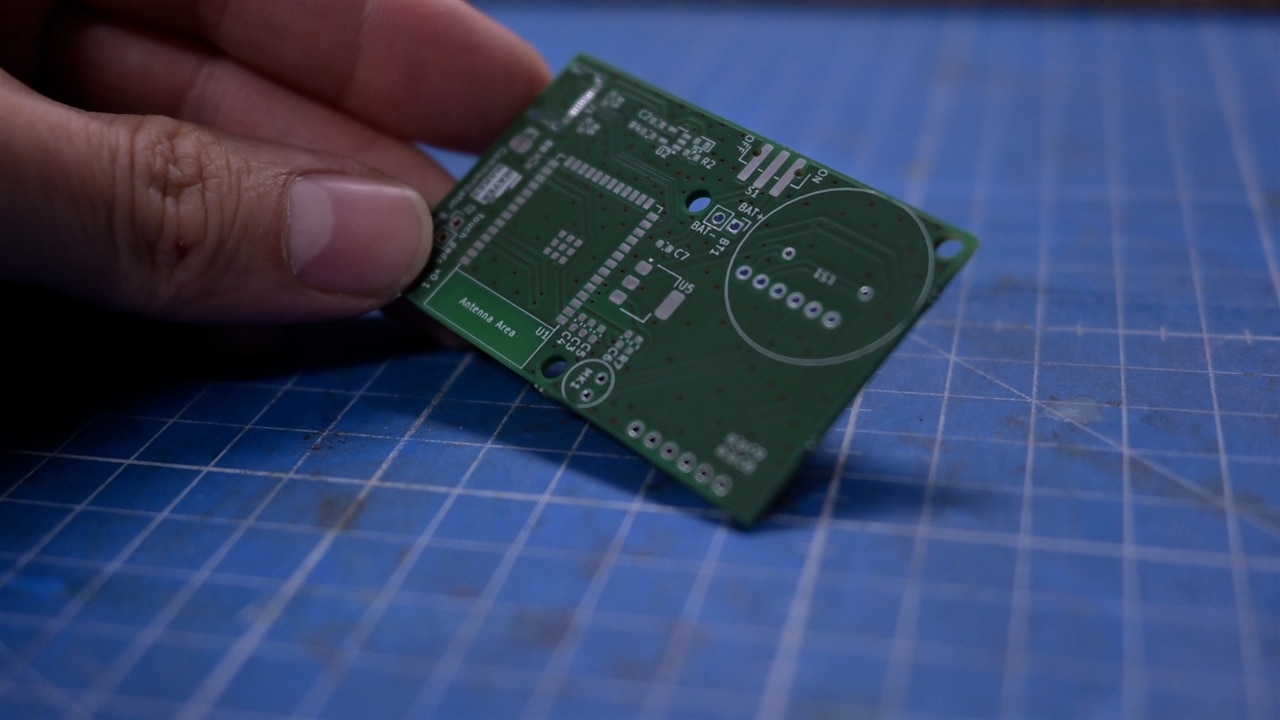
The Build
Clem’s goal was to design something that bridged the gap between bulky handheld communicators and the sleek, minimal badge-style devices seen later in sci-fi. More buttons, less subtlety, and a full measure of cool factor.
Under the hood, it’s surprisingly modern:
-
ESP32-S3 handles processing, Bluetooth, and communication with the GSM module.
-
SIM800L provides GSM connectivity, handling SMS, voice calls, and even data transmission.
-
1300mAh LiPo battery keeps it powered.
-
0.1F supercapacitor stabilizes power delivery during GSM transmit spikes.
The SIM800L is notorious for drawing short, heavy bursts of current, up to 2A, when connecting to a cell tower. Clem found that even the onboard tantalum capacitor wasn’t quite enough to handle those spikes.
“There’s a tantalum capacitor on the SIM800L breakout board that should be able to provide the necessary power during these short bursts,” Clem says in the video. “But it seems it’s just a little bit not enough, so I added a super cap with 0.1 farad, yes, not microfarad, farad, and now it works a treat.”
The result: stable calls and a power section that, while compact, gives the device its own unique post-call scent. “It’s like the smell of victory,” Clem jokes. “And maybe slightly toasted electronics.”

GSM Woes and Workarounds
Getting an ESP32 to play nicely with a SIM800L is rarely straightforward. The two modules communicate using UART and AT commands, and their voltage levels don’t always match neatly.
“The module talks at 9600 baud,” Clem explains, “and both run on 3.3 volts, so they just about overlap. Usually, you’d use a level shifter in between, just to be safe.”
To simplify debugging, the ESP32 acts as a serial bridge, passing commands between the USB serial interface and the GSM module. Clem wrote a small Arduino function called updateSerial() to make this possible. It continuously forwards data between the USB port and the SIM800L — allowing him to manually send AT commands and monitor responses through a terminal.
This bridging design, combined with the setup() initialization routine, ensures the communicator always checks for module readiness before attempting any call operations. The firmware also manages basic call handling through simple serial commands:
-
ATAanswers an incoming call -
ATHhangs up -
ATD<number>;places a call
These routines, along with a simple touchRead() debounce system, make up the main interaction logic inside the Arduino sketch.
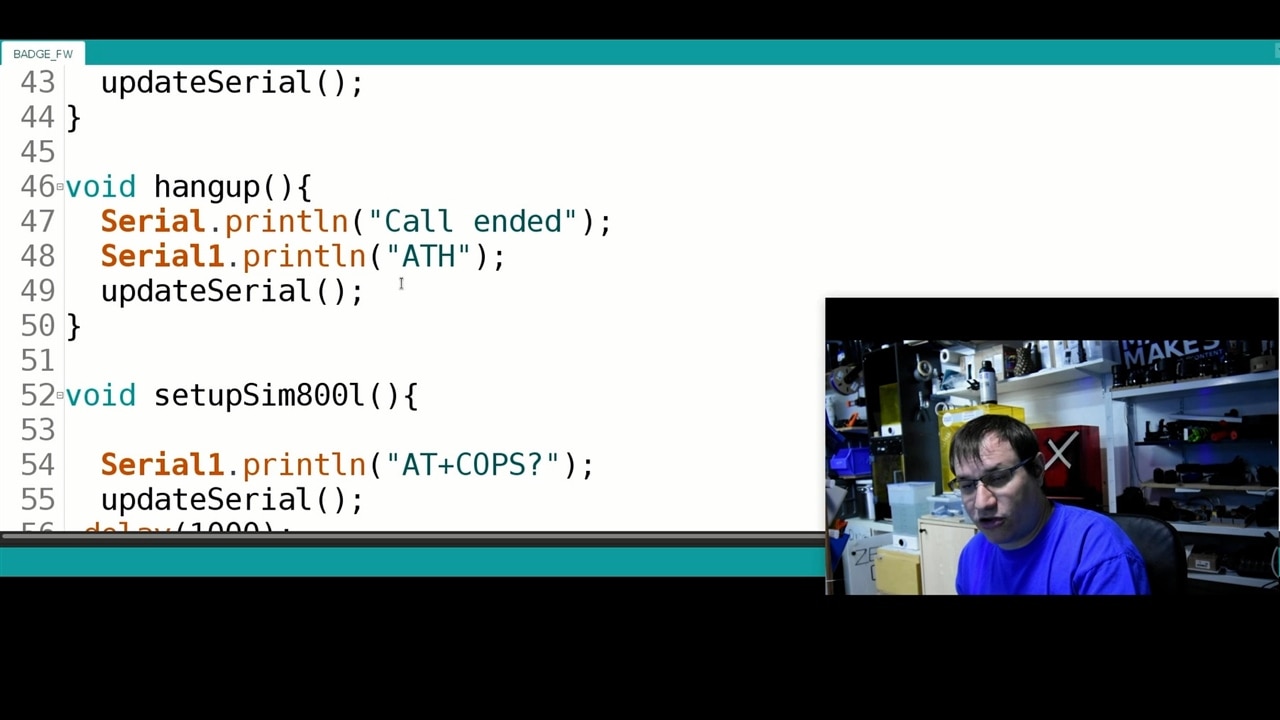
Touch Control and Case Design
For the case, Clem used FreeCAD to model the enclosure around the PCB exported from KiCad. The housing is 3D printed using a mix of PETG for strength and conductive PLA for touch interaction. Early versions had the entire case conductive, but this caused unpredictable triggering of the touch interface.
“The touch interface was a bit too twitchy,” Clem admits. “Once the case touches me and then I move, it could trigger randomly. So I insulated the conductive parts and reprinted it, this time using PETG with only the badge logo printed in conductive filament.”
Touch interaction replaces a physical button — the entire badge surface responds to touch, making it feel like a single-button communicator. A one megaohm resistor between the touch pad and ground stabilises the signal and prevents lockups.
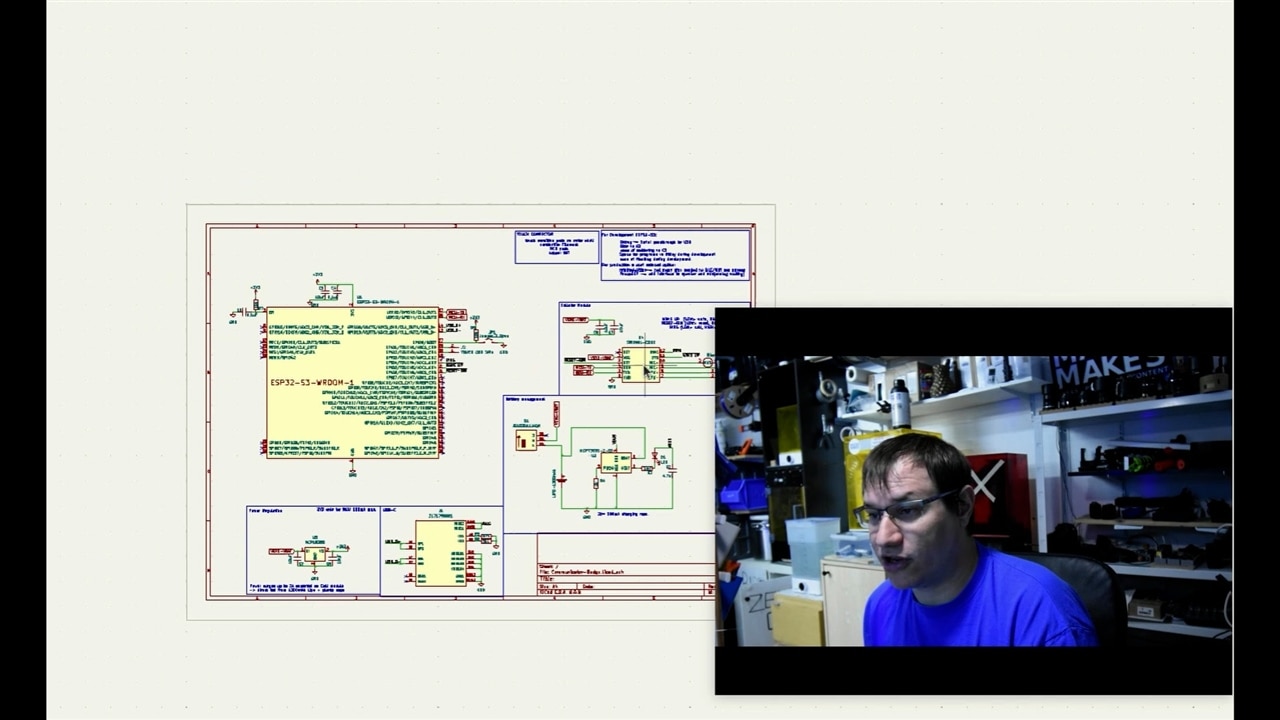
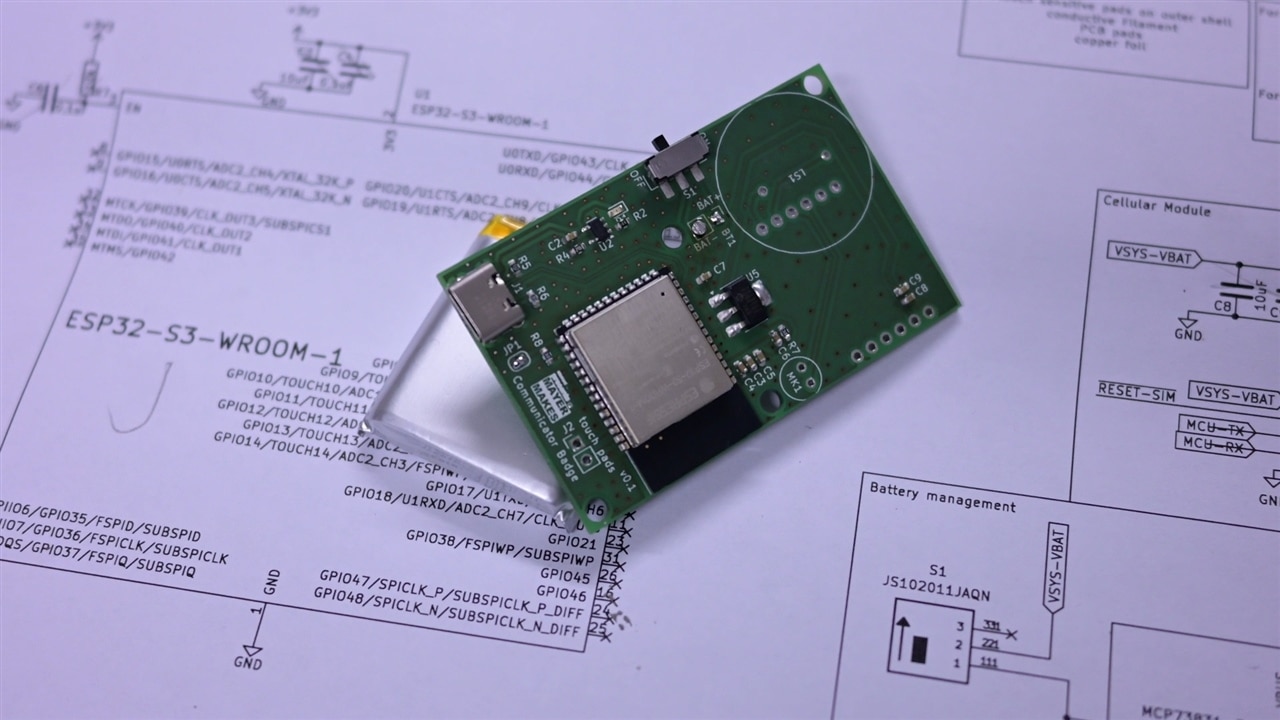
From Circuit to Badge
Internally, every component is arranged to minimise thickness. The ESP32-S3 and SIM800L are mounted back-to-back, sharing thermal load and space with the LiPo battery and USB-C port. The final assembly measures roughly 8–10 mm thick, depending on the speaker placement. Clem even re-used a simple badge clip from a trade show to complete the look.
“Now everything’s in here — the speaker, microphone, USB-C port,” Clem says, showing the final assembly. “And this is a little badge holder I got from a trade show. Now I can just clip it on my uniform and be ready for new adventures out in space.”
When powered on, the communicator connects to the GSM network and rings like a real phone. During the video, Clem takes a live call on it:
“It’s actually ringing! Hello? Hello, hello. Oh yeah — it works. Don’t let me forget to blur out the number!”
The Finished Communicator
The finished build embodies both the DIY spirit and a touch of nostalgia. It’s a working communication badge that looks like it belongs on the chest of a 23rd-century explorer, but operates through today’s cell towers.
It’s functional, compact, and very much a product of Clem’s trademark approach — practical engineering wrapped in humor and creativity.
“That’s my working communicator badge,” Clem concludes. “Now I can call it, take a call, and be ready for new adventures out in space.”
All project files and code are available for download below.
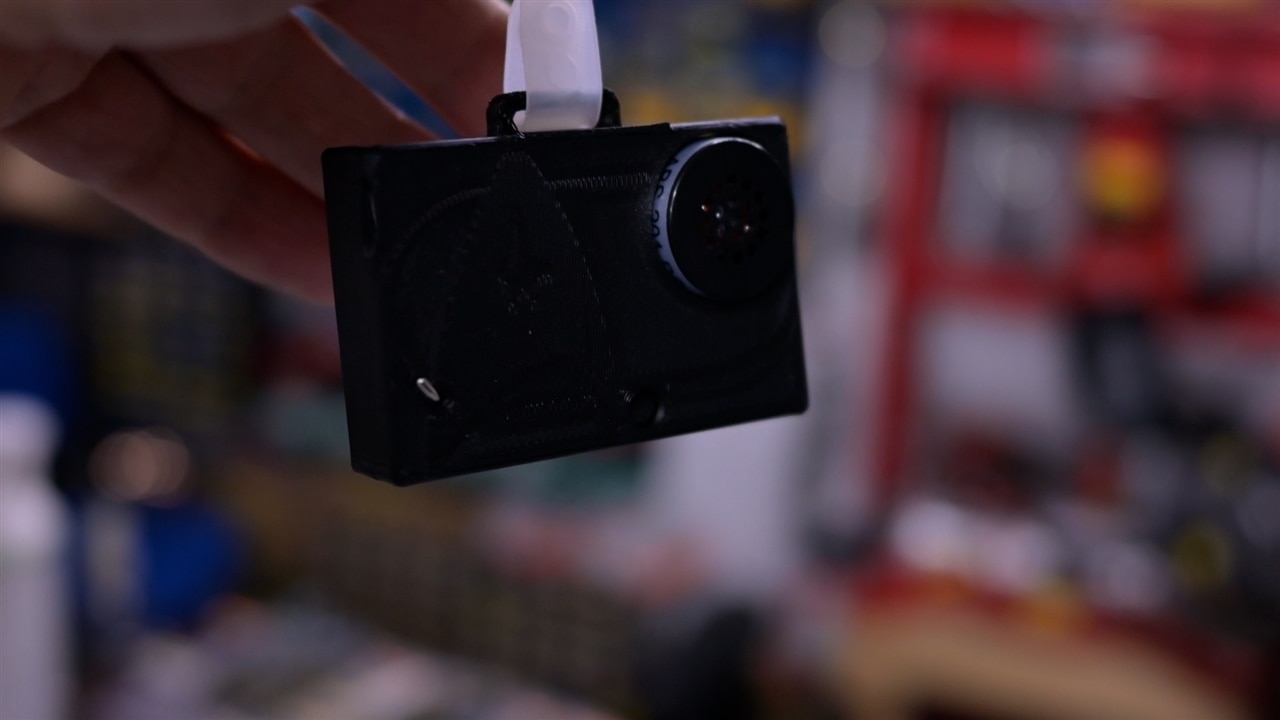
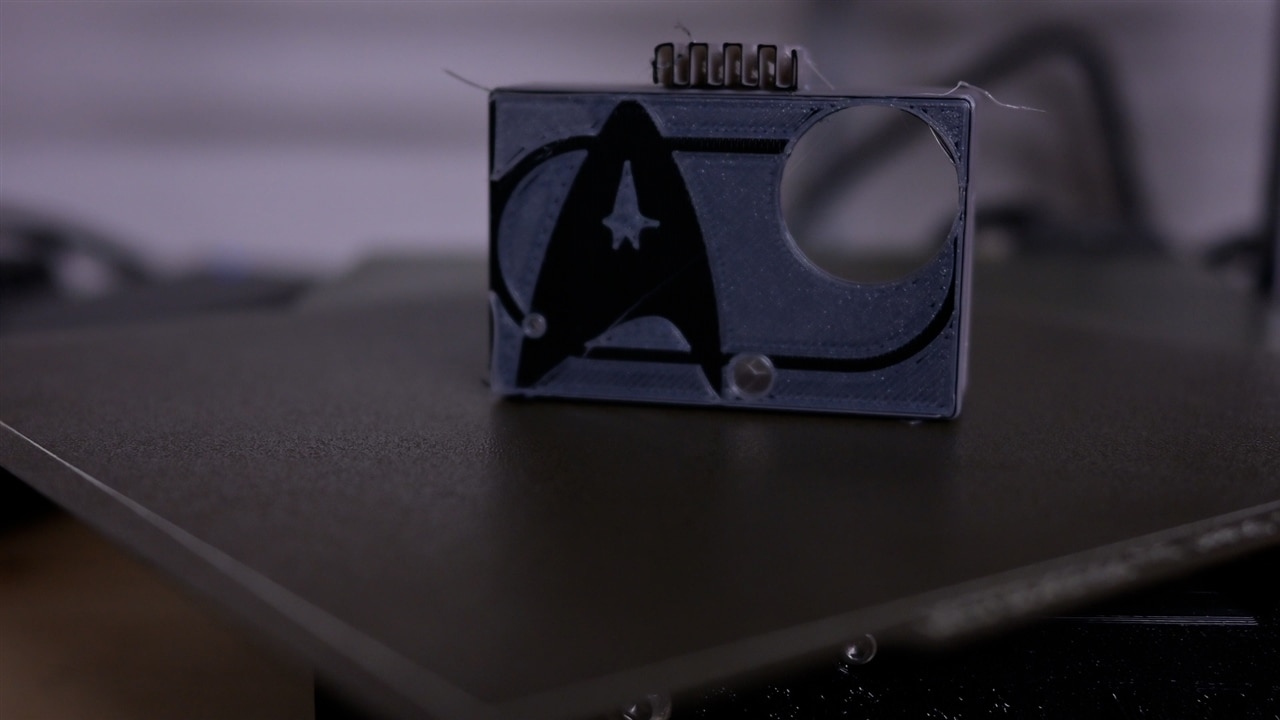
Supporting Links and Files
- Episode 689 Supporting Files
- Communicators from different franchises
Bill of Materials
| Product Name | Manufacturer | Quantity | Buy Kit |
|---|---|---|---|
| ABM-713-RC | Multicomp PRO | 1 | Buy Now |
| MCABS-201-RC | Multicomp PRO | 1 | Buy Now |
| 217179-0001 | MOLEX | 1 | Buy Now |
| MC011472 | multicomp pro | 1 | Buy Now |
| ESP32S3.WROOM1 | |||
| Sim800l MODULE | |||

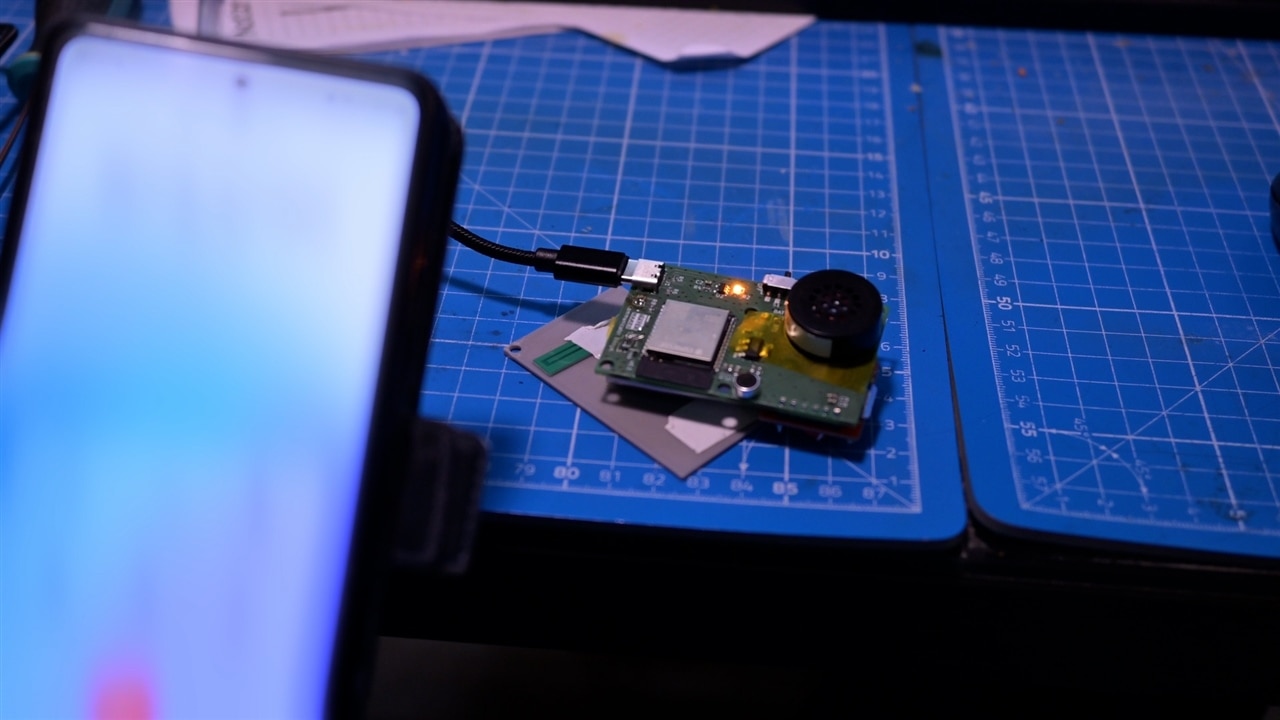
Top Comments